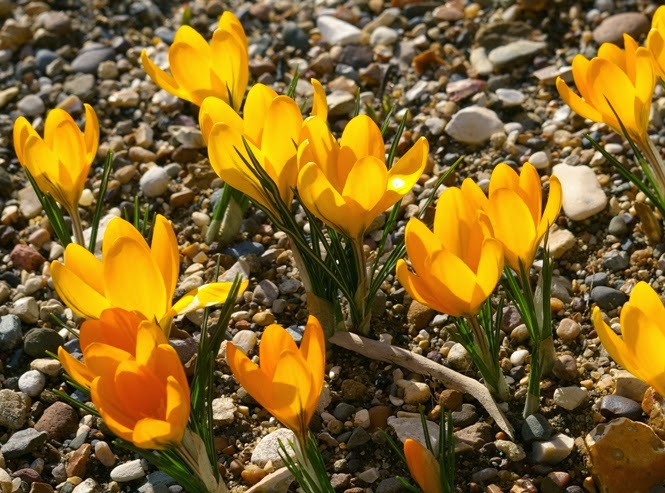 |
| Rhododendron thomsonii - the Hooker clone in Ray Wood |
Flowering now in Ray Wood at Castle Howard is a lanky, half-collapsed old rhododendron
that has very obviously seen better days. Unprepossessing it may be, but it is one of the most treasured plants in our collection, a 'Hooker original' clone of
Rhododendron thomsonii.
 |
| Rhododendron thomsonii, by WH Fitch, from Rhododendrons of the Sikkim-Himalaya, 1849 |
The still young Joseph Dalton Hooker (1817-1911) spent the year 1849 botanising in Sikkim. His own account of that time may be read in his
Himalayan Journals (1854) and the story has been retold many times elsewhere, the highlight being the imprisonment of Hooker and his companion Archibald Campbell by the Rajah of Sikkim. But for botany and horticulture the expedition was incredibly significant, revealing most strikingly the extraordinary diversity and richness of the genus
Rhododendron in the Himalayan region. From the notes, sketches and specimens Hooker sent home a magnificent series of plates was prepared by the botanical artist Walter Hood Fitch, and published immediately in sections as
The Rhododendrons of Sikkim-Himalaya (1849-51). One of the species found by Hooker had brilliantly scarlet flowers with neat foliage and attractive bark, and he named it after his friend from the University of Glasgow, Dr Thomas Thomson (1817-1878), who joined Hooker in Darjeeling after the latter's release from captivity. Thomson also knew about being a prisoner: he had been captured in the First Afghan War (
plus ça change!) and was to have been sold into slavery, but managed to escape. Together they went to Assam for another season's exploration.
 |
| Thomas Thomson, by George Richmond, known for flattering portraiture. |
In Sikkim Hooker did more than just collect herbarium specimens: he also gathered seed. This went back to Kew, from where it was distributed to interested individuals and organisations worldwide, including the then famous nursery of Standish and Noble at Sunningdale in Surrey. They made Hooker's rhododendrons commercially available and in so doing started the long-lasting fashion for rhododendrons in British gardens. In their catalogue of 1852 they wrote: " No plants of recent introduction have created so much interest as the Sikkim Rhododendrons, discovered and sent to this country by Dr Hooker... The exquisite representations of the principal kinds, in
The Rhododendrons of the Sikkim-Himalaya, have in no small degree contributed to excite and strengthen expectation.' One can imagine a brisk trade in young seedlings that year.
But not all the plants were sold. A later owner of the Sunningdale site, James Russell, creator of the garden in Ray Wood and the Yorkshire Arboretum tells the story in notes now included on our database: When
I first took over Sunningdale Nurseries in 1939, 7 trees from Hooker's Sikkim
seed of 1849 survived, some of them multi-stemmed and of great size. The wartime
neglect, the winter of 1941, their age and the cold and freezing rain of 1947
took their toll." Jim Russell moved to Castle Howard in 1968 after an inheritance dispute forced the sale of the site, but he brought representatives of the rhododendron collection there with him, including "a layer 8/9', from the tree which Harry White considered to be the
best of the Hooker plants, in 1968 and this is growing extremely well."
It is this plant that is now in flower - we hope the frost forecast for this weekend does not penetrate the canopy of Ray Wood - and looking so sparse, a victim of the undergrowth that swamped the collection during an unfortunate period of neglect. To preserve this clone, with this remarkable history, we have sent material for micropropagation at the Duchy College in Cornwall, and cuttings have been taken, so we hope that before too long we will be able to plant out a further generation of healthy youngsters.
 |
| The dubious state of our 'Hooker clone' of Rhododendron thomsonii. "The
trunk of this tree is one of its main beauties; with age the bark begins to
peel, revealing a polished stem, rich fawn and brown, with lilac shadings. In late
summer there is another season of beauty when the young leaves appear; at first
lettuce-green, they change to a vivid blue-green for a week or so." James Russell.
|



















































